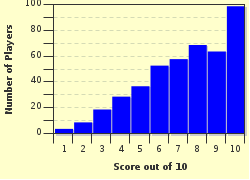Quiz Answer Key and Fun Facts
1. On Palm Sunday, 26th March 1461 the Battle of Towton, one of the bloodiest in English History, was fought just outside the Yorkshire village with the same name. During which violent period of history was this?
2. Which North Norfolk village was know as 'England's Nazareth' due to the shrines dedicated to the Virgin Mary? The pilgrimage to the village was undertaken by every King and Queen of England between Henry III and Henry VIII.
3. Situated on the edge of the Oxfordshire village of Woodstock is the home of the Churchill family, the house given by a grateful Queen Anne to John Churchill 1st Duke of Marlborough for defeating the French. Which of his famous victories is it named after?
4. The formation of the 'Friendly Society of Agricultural Workers' led to the transportation to Australia of a group of agricultural labourers from which Dorset village?
5. Lacock Abbey in the village of Lacock, Wiltshire saw a major development in which field during the 1830s?
6. Shortly before he lost at the Battle of Hastings, King Harold Godwinson defeated a Norwegian army led by Harald Hadrada and his brother Tostig at a battle near which East Yorkshire village?
7. Higher Bockhampton, a small community beside the village of Stinsford, near Dorchester in Dorset, was the birthplace of which famous author?
8. Which of these is a 'Thankful Village' or 'Blessed Village', one of 51 communities in England and Wales that have been identified has having lost none of their men during the Great War of 1914-18?
9. Which World Championship has taken place in the village of Ashton in Northamptonshire every year since 1965?
10. Which Derbyshire village known as 'The Plague Village' chose to isolate itself from the surrounding communities after plague was discovered there in August 1665?
Source: Author
topblue
This quiz was reviewed by FunTrivia editor
bloomsby before going online.
Any errors found in FunTrivia content are routinely corrected through our feedback system.

